A good edible mushroom to know that's easy to identify for beginning foragers, shrimp of the woods or aborted entolomas (Entoloma abortivum) look like strange white popcorn balls that crawl out of the earth. During their season in the mid to late fall they'll seem to be everywhere looking almost like they're oozing out of tree roots and dead wood. Read on and I'll explain what you need to know.
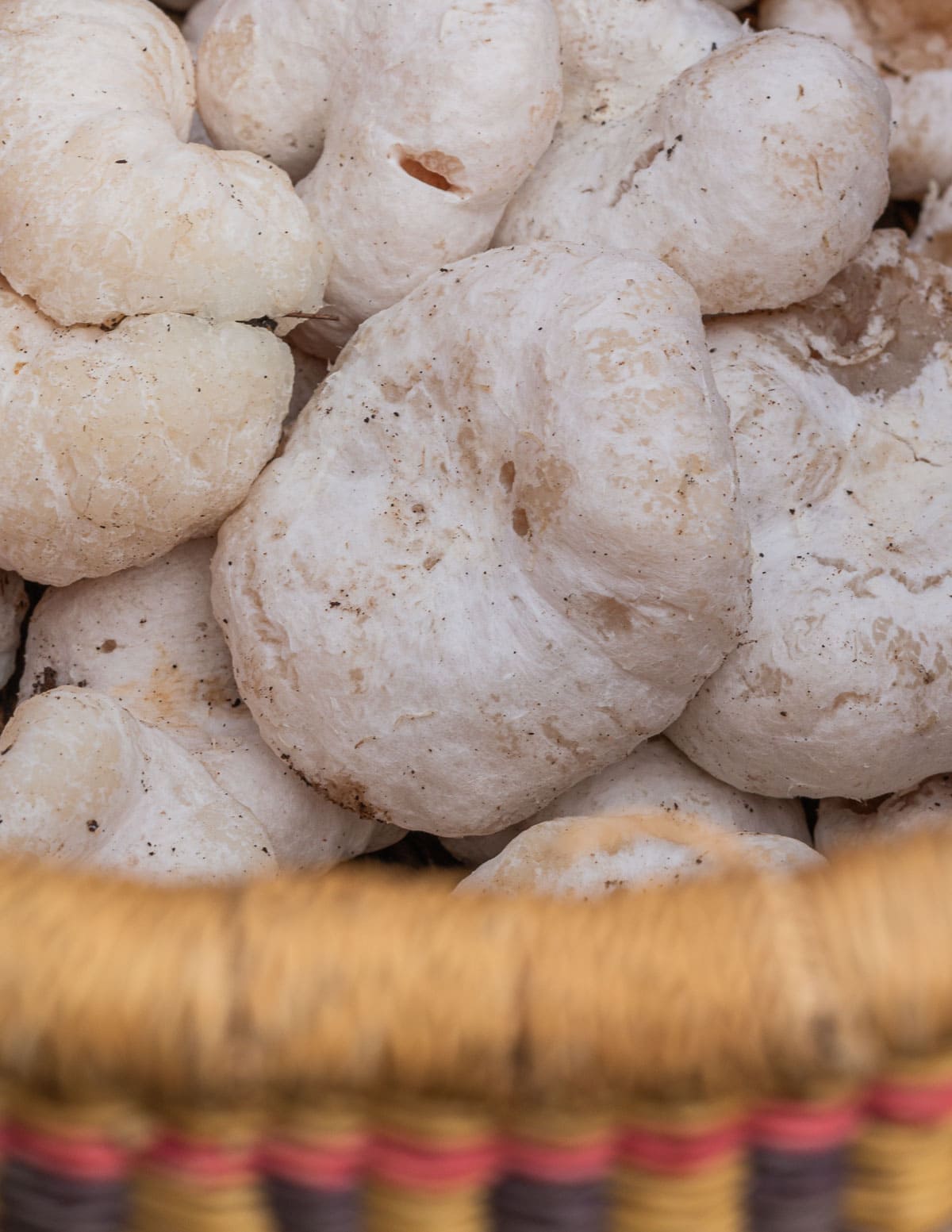
How to Identify Shrimp of the Woods
An extremely easy and safe mushroom to identify, shrimp mushrooms appear as white popcorn-shaped mushrooms growing on or around dying elm trees as well as in coniferous woods. They can grow above the roots of trees, at the base of living and decaying trees and stumps, or directly from the tree under the bark.
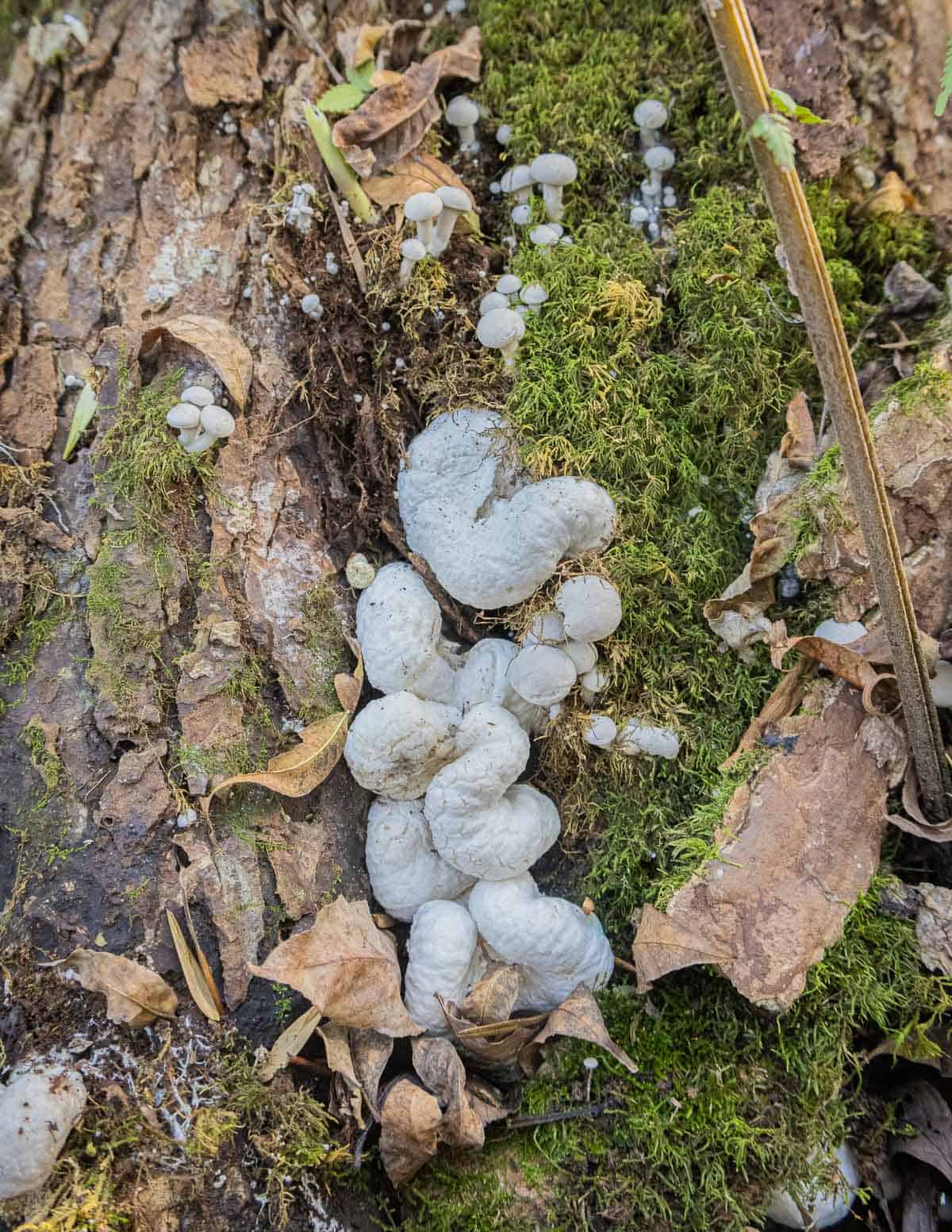
Unaborted forms of the mushroom are typically nearby, as well as honey mushrooms.
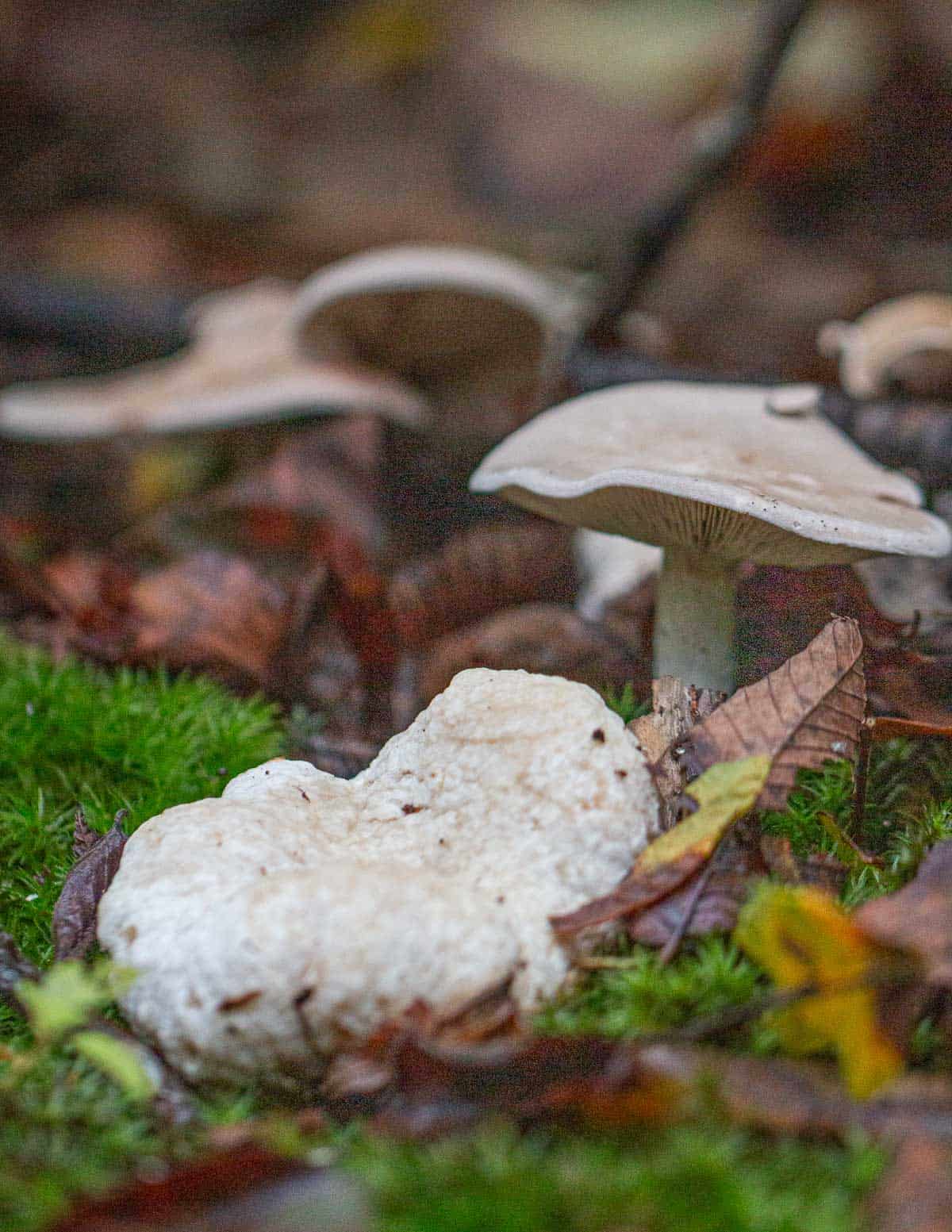
There is a bit of confusion as to what causes these mushrooms to form, but the latest theory I've heard is that aborted entolomas are produced through a reaction of an entoloma species with honey mushrooms when growing in the same vicinity.
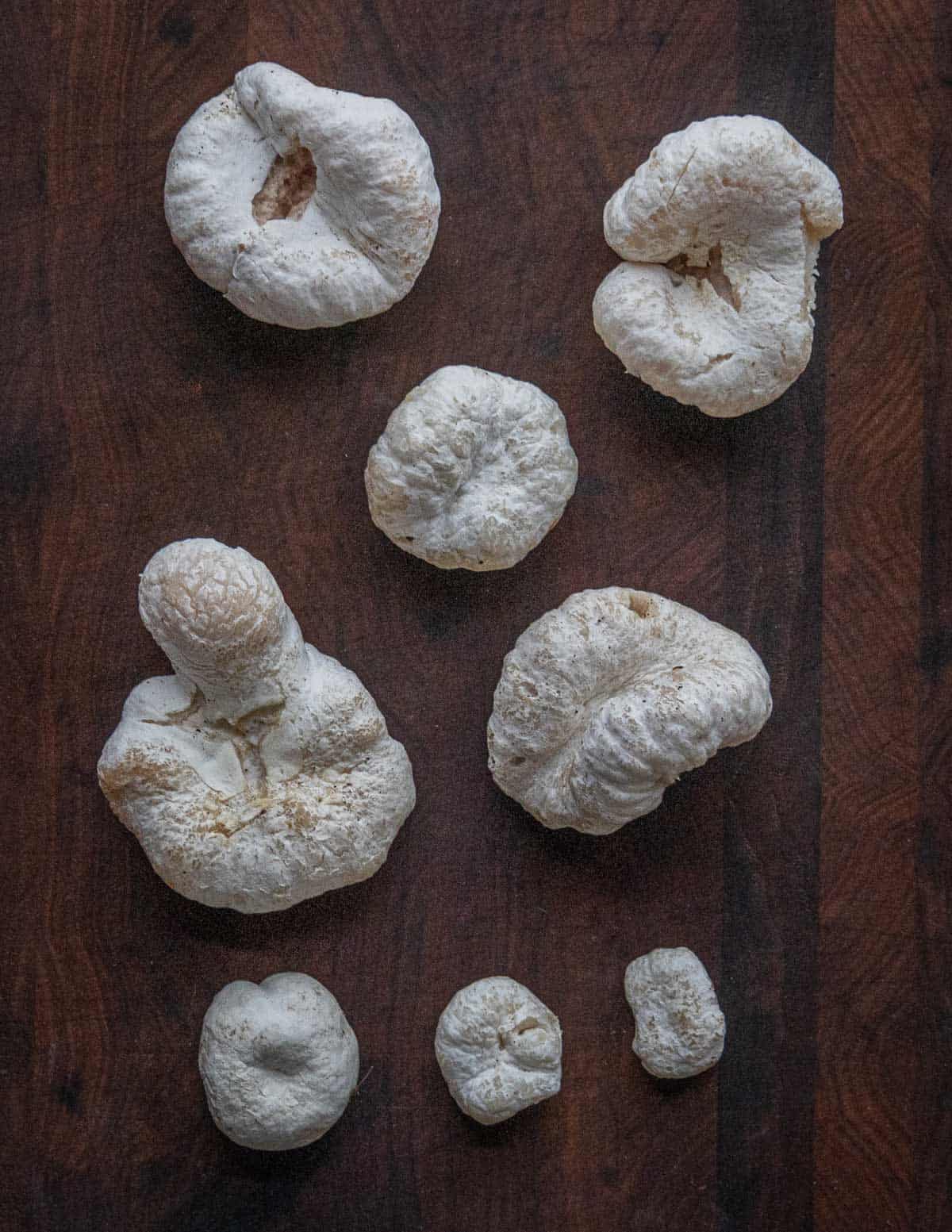
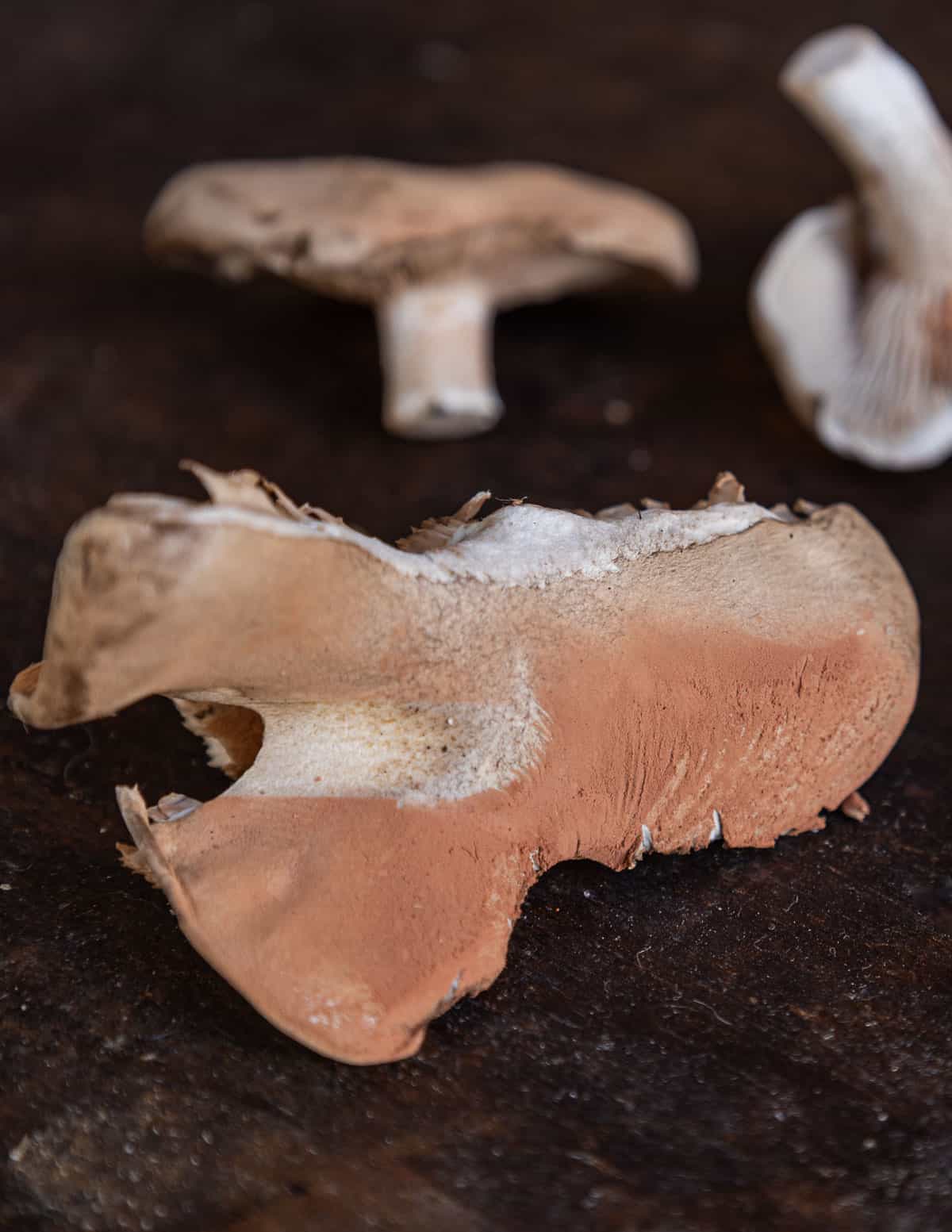

Aborted forms=Carpophoroids
Something occurs between the honeys and entolomas, causing the mushrooms to "abort" themselves and change their shape from a typical looking mushroom with a stem, cap and gills, to the funky popcorn ball shown in the pictures here.
The mushrooms are firm to the touch when fresh, lacking gills of any kind. Technically, the aborted forms are known as carpophoroids.
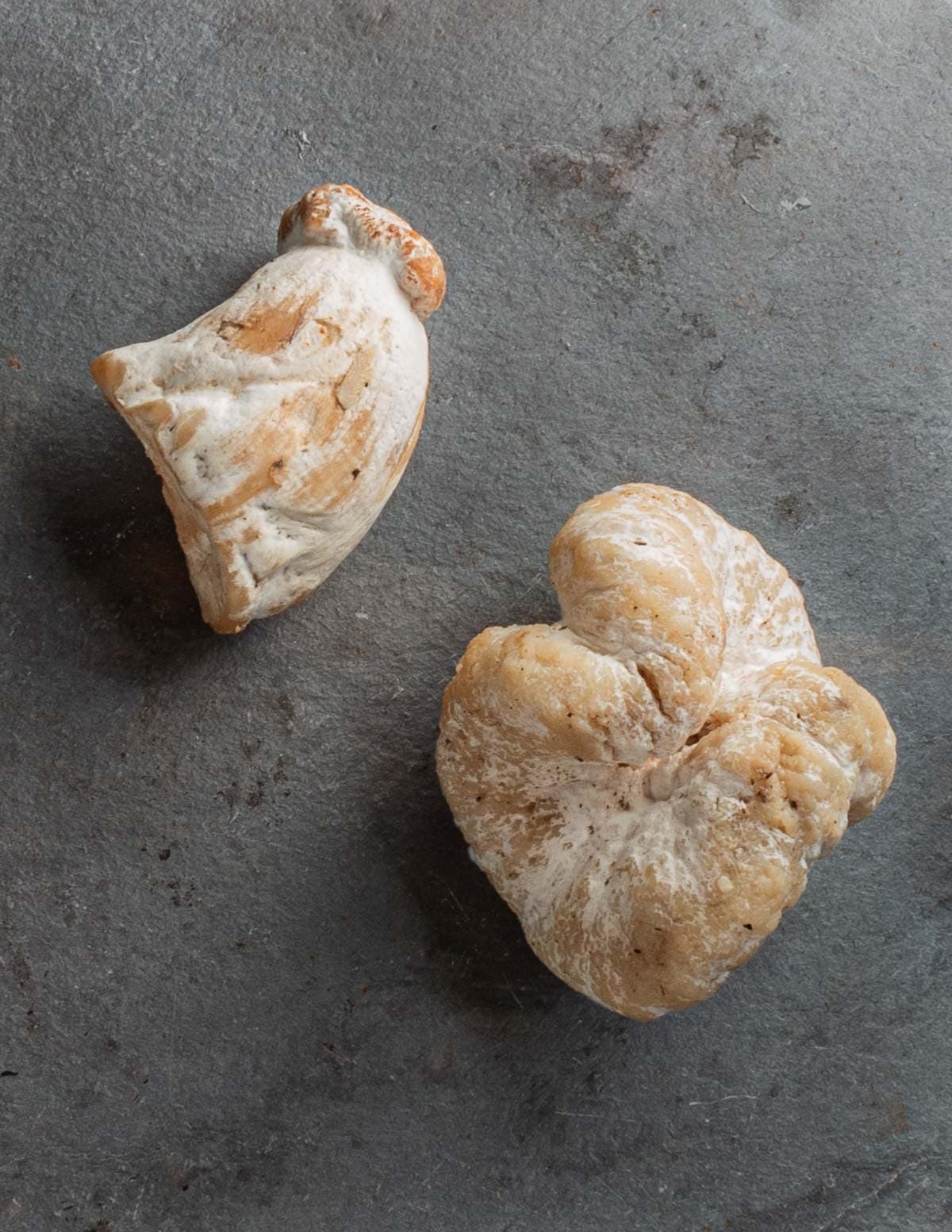
From what I've seen, the strange relation seems compounded when the two mushroom species are near one another.
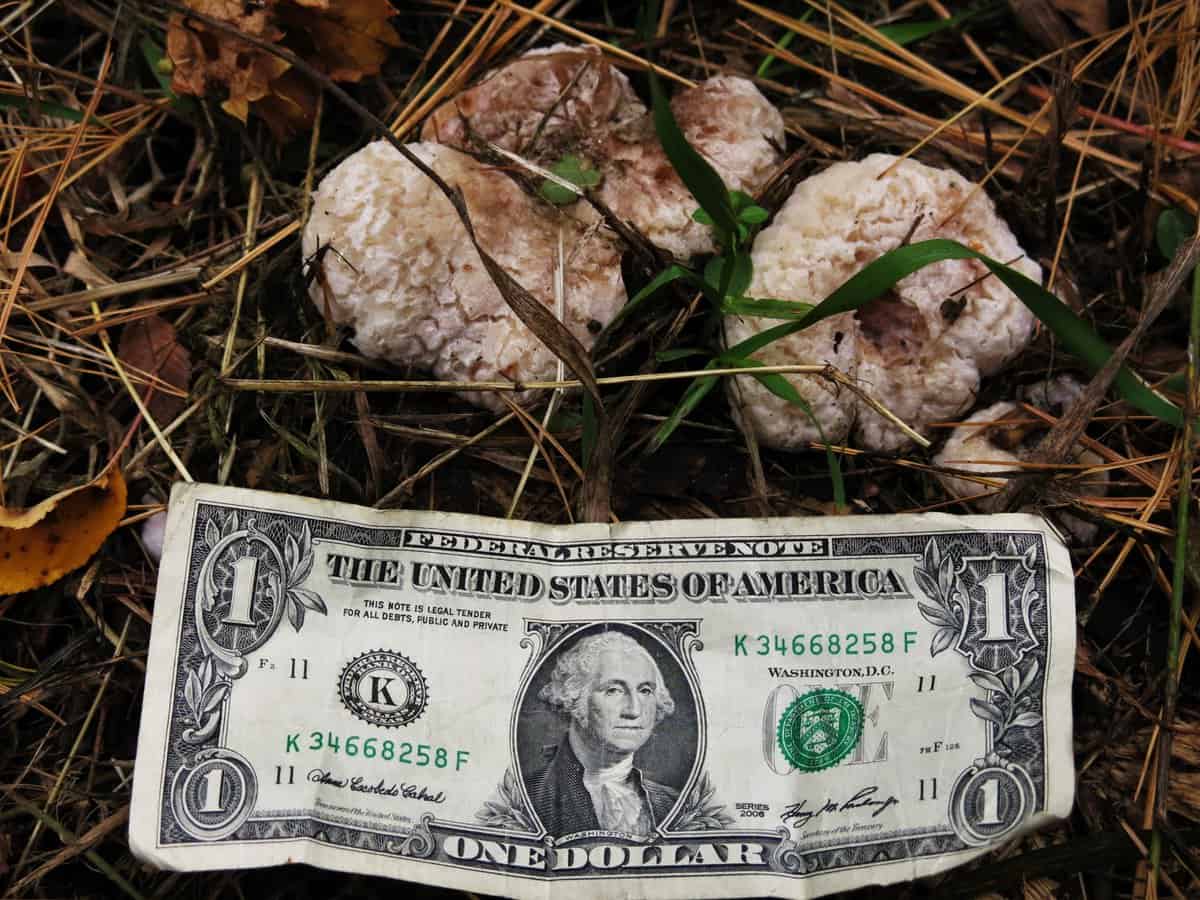
Sometimes they can be confusing, and you might see mushrooms that aren't fully aborted, or are in fused clusters like below.
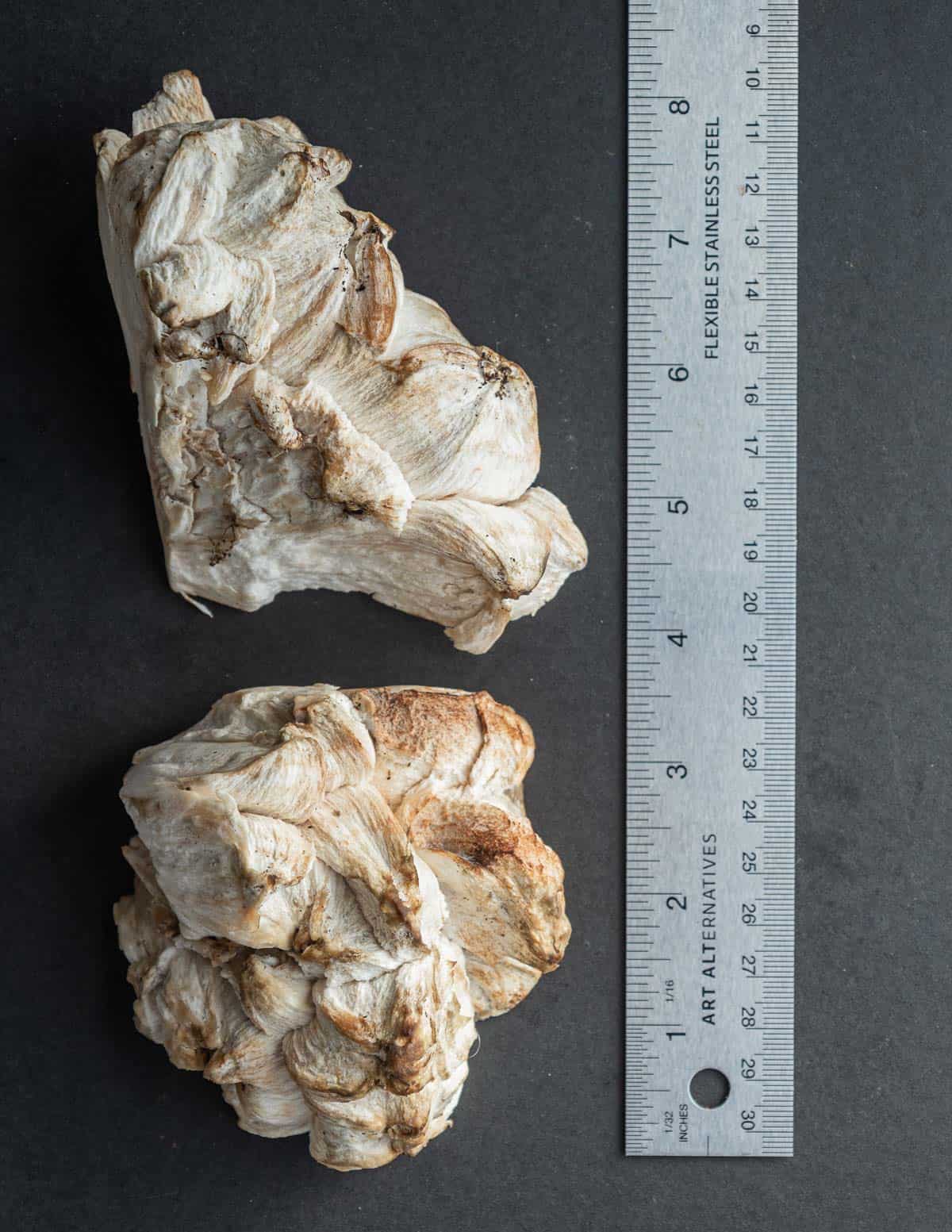
Aborted Armillaria, or Entoloma?
I've wondered for years what species I'm eating when I cook aborted entolomas, thankfully there's Tom Volk's page, a well-known professional mycologist.
Tom says that originally aborted entolomas were thought to be entolomas forced by the honey mushrooms to form the corpophoroids, but now, through new research that he and his students have done, they've deduced that the mushrooms we're eating are actually aborted honey mushrooms, so the name aborted entoloma is technically incorrect.
Thanks to Sarah DeLong-Duhon for sending in the images of partially parisitized Armillaria below.
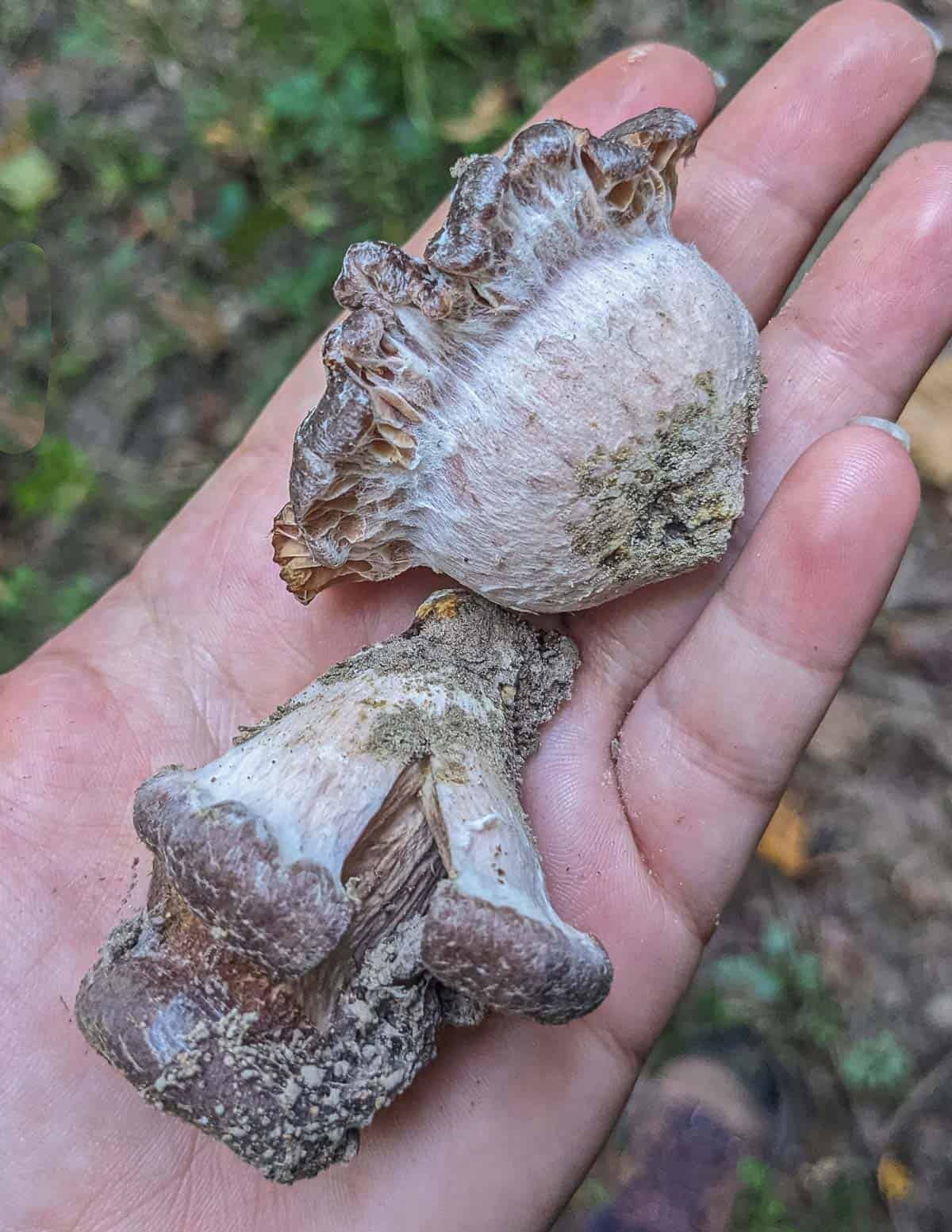
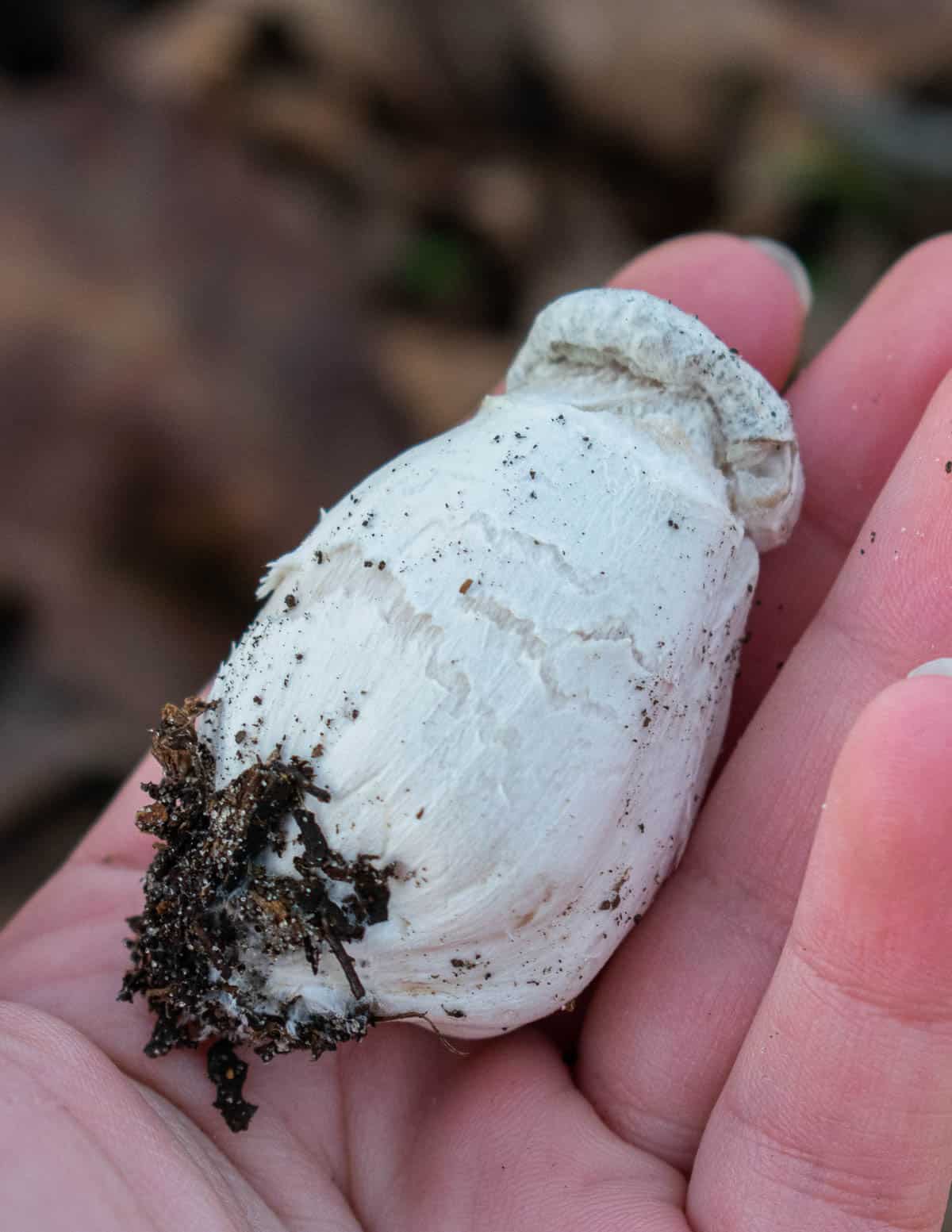
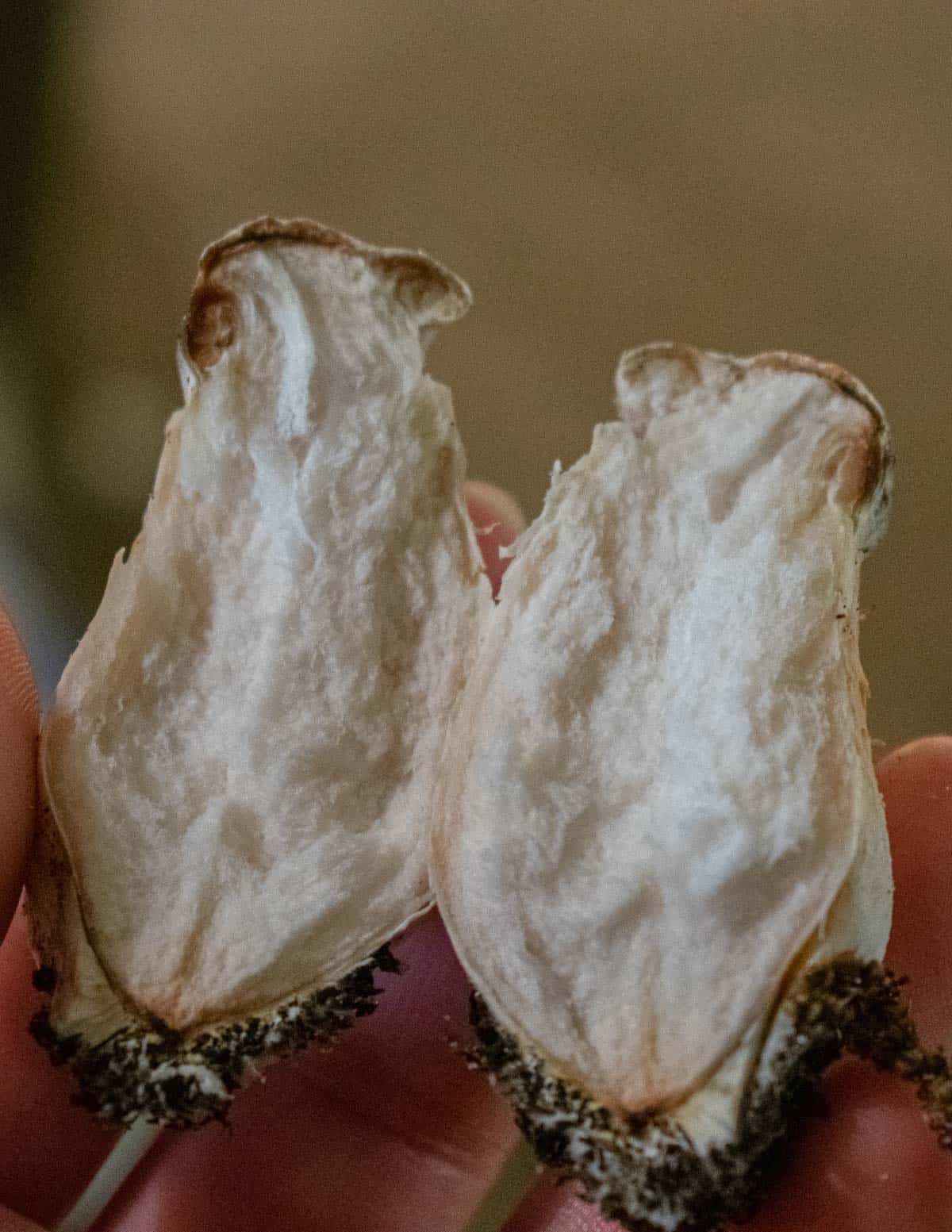
Personally, I think we should adopt "shrimp of the woods", as a common name, a nod to Tom Volk. His excellent article on the mushrooms is at Tom Volk's Page
Clean as you harvest
Entolomas are notoriously dirty, which is no surprise since they often grow directly on the ground. If you don't want a gritty meal, pick clean. Here's what I do: pick up the mushroom, and cut away any dirt from the base of every mushroom as you pick each mushroom.
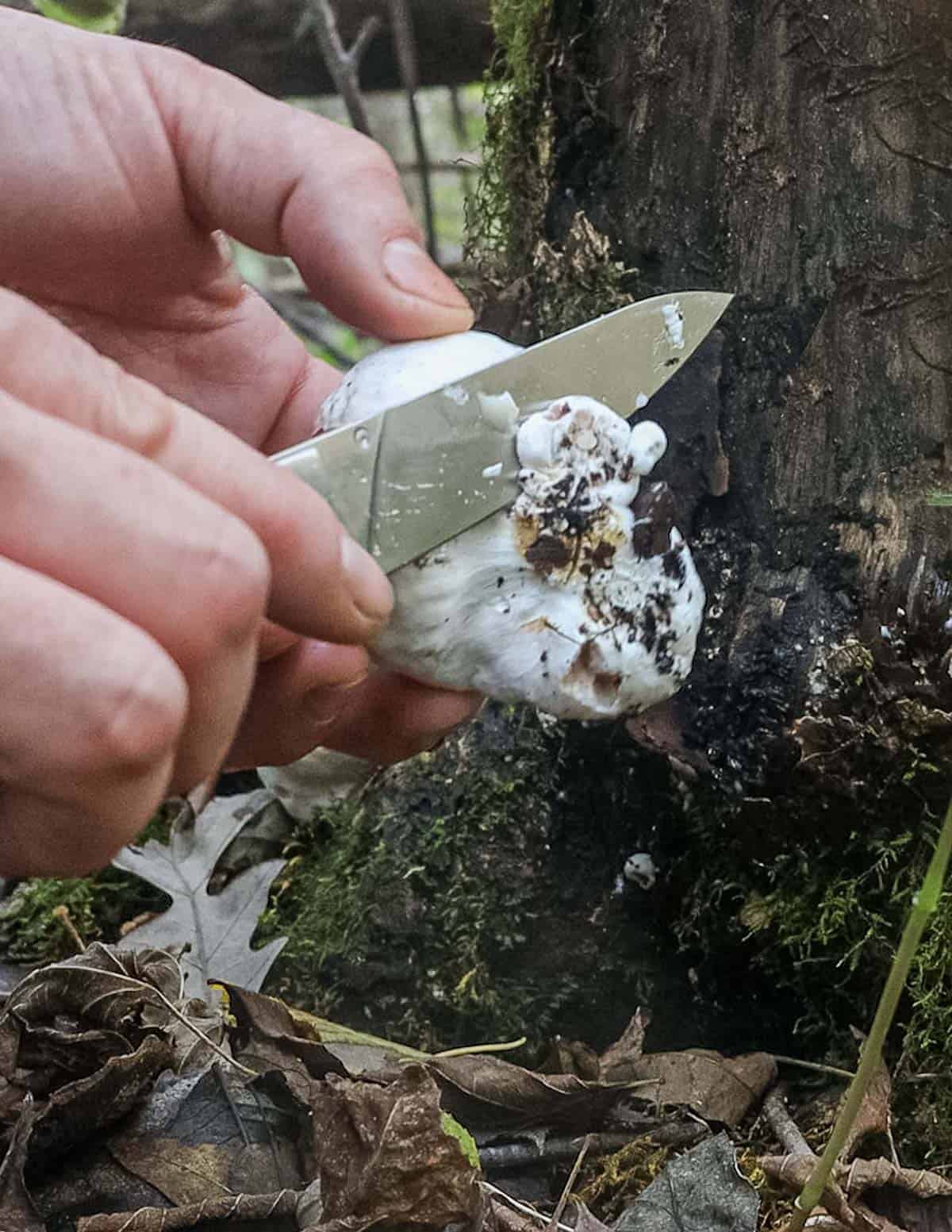
A little extra work in the field will save you time. Entolomas are full of nooks and crannies and just one dirty one can ruin the whole collection. Cut any large or particularly crenulated ones in half in the field to clean them.
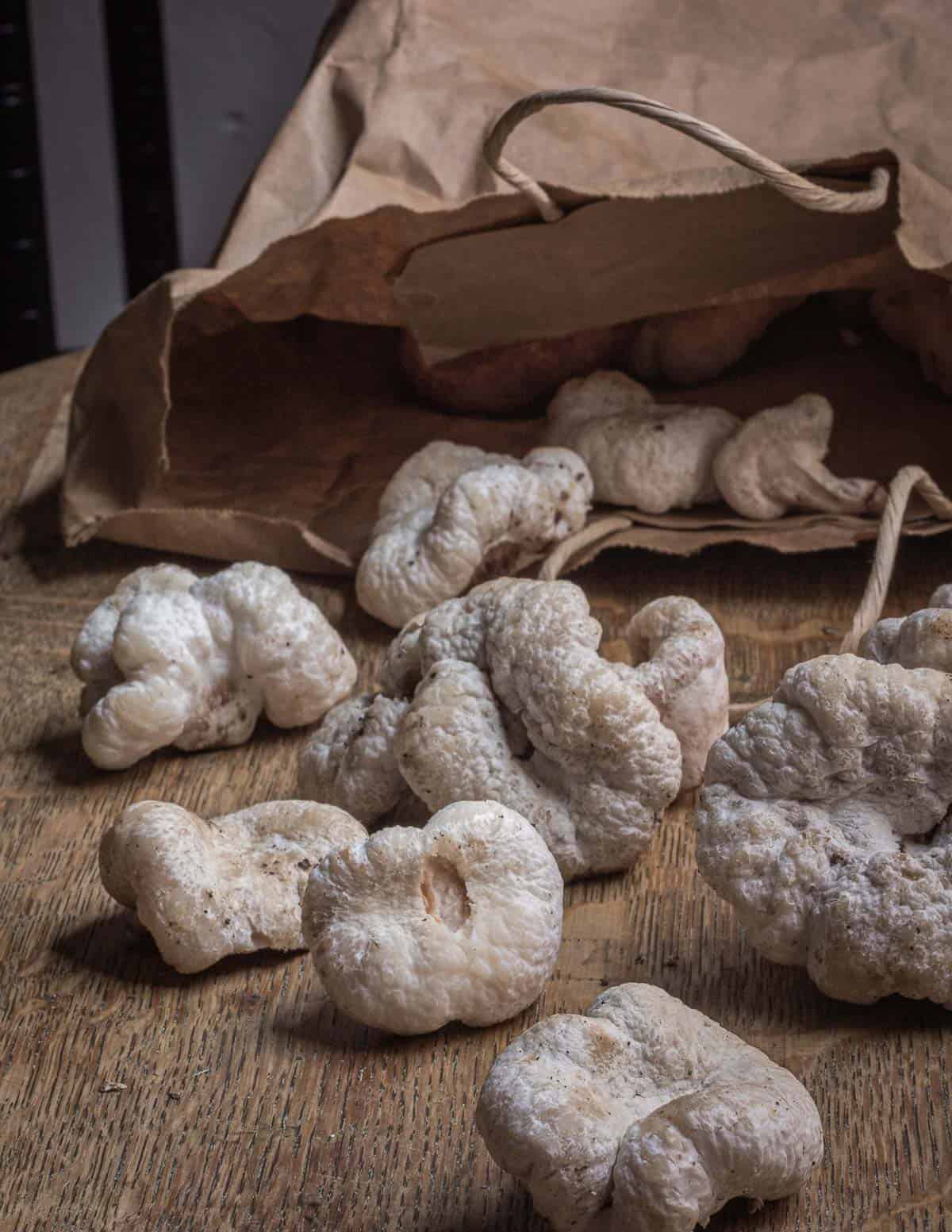
You want white, fresh looking mushrooms that are firm to the touch. Leave soft or spongy mushrooms in the woods as they can be filled with fungal knat larvae.
How to Cook Shrimp of the Woods
Collecting entolomas is easy. Cleaning and cooking is the hard part, well, more so just the cleaning.
The mushrooms often have a divet in the top, and if dirty mushrooms are put on top of them in a basket or bag, they will be much harder to clean, and they'll make all your other mushrooms dirty too.
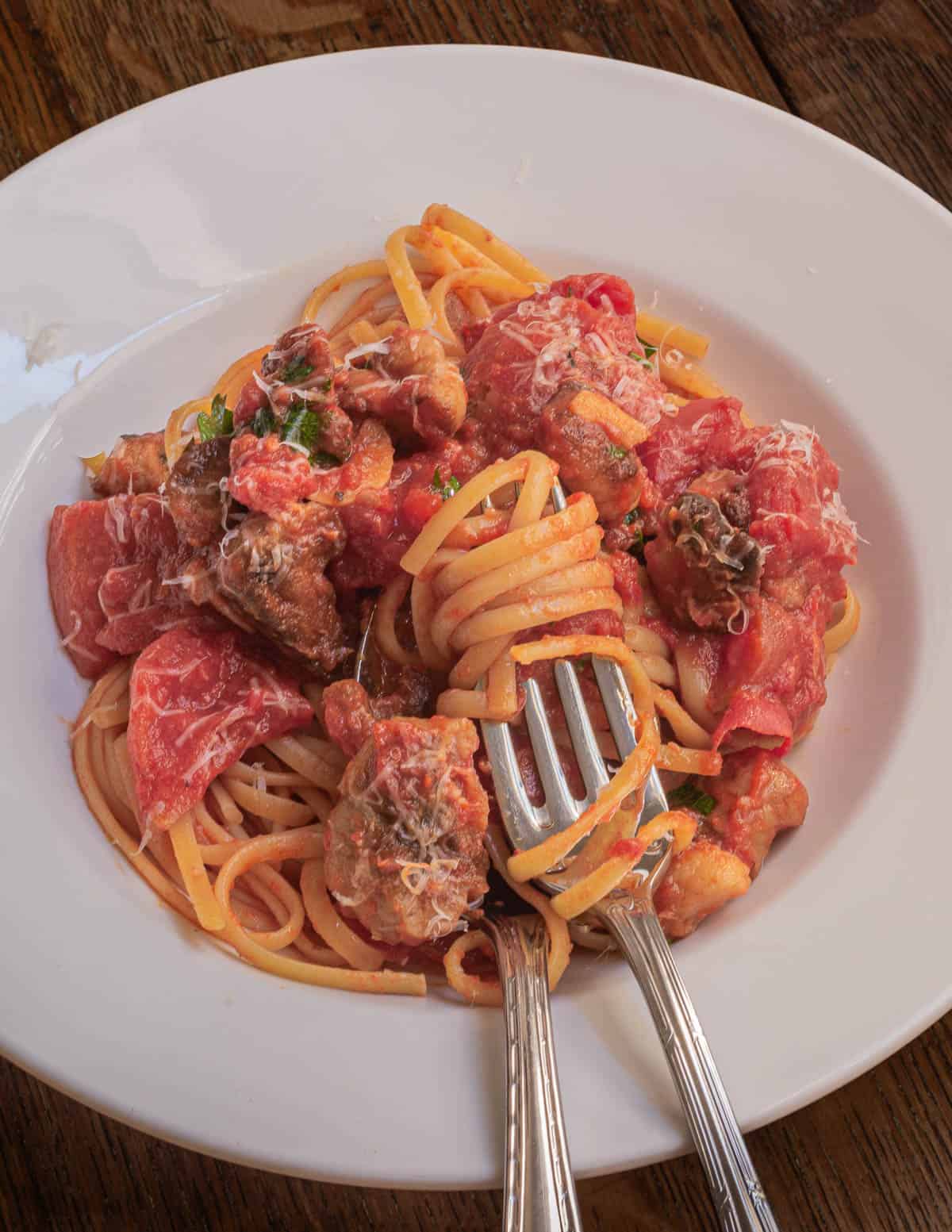
Browning: the key to good flavor
To be honest, if you don't prepare these right they can be pretty uninteresting. The key to flavor with entolomas is to caramelize and brown them. If they just get stewed from raw, things are going to be bland and styrofoamy, just like with a puffball.
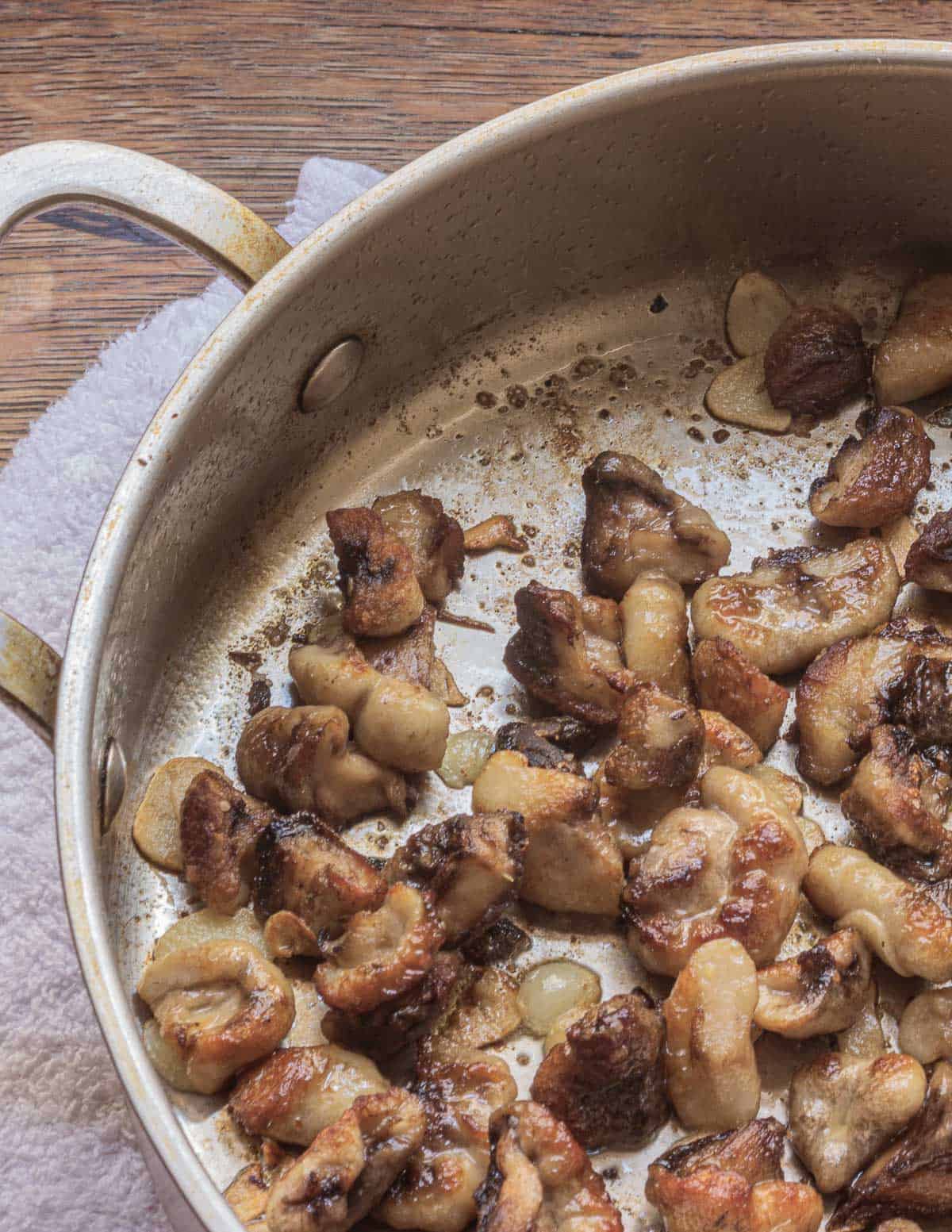
Like the lobster mushroom, the characteristics of aborted entolomas can give plenty of inspiration. The first few times I ate them, I noticed that they have a texture that's a bit similar to shrimp, just with a mild mushroom flavor. They do not literally taste like shrimp, as some claim.

Thinking of shrimp leads me toward preparations that might be good with shellfish or crustaceans. They love white wine, pasta with oil and tomato based sauces, a bit of hot pepper, you get the idea.
One trick I use is just searching for a recipe for shrimp that looks good-then I plug in entolomas. You can't lose here, well, unless you don't brown them first!
Preservation
As far as preserving your shrimp of the woods, there are a couple tricks I've found. Just like puffball mushrooms, these have white, spongy flesh.
Like most wild mushrooms, I don't recommend freezing them raw, since it does something strange to their texture. They can, however, be freeze dried and it works well.
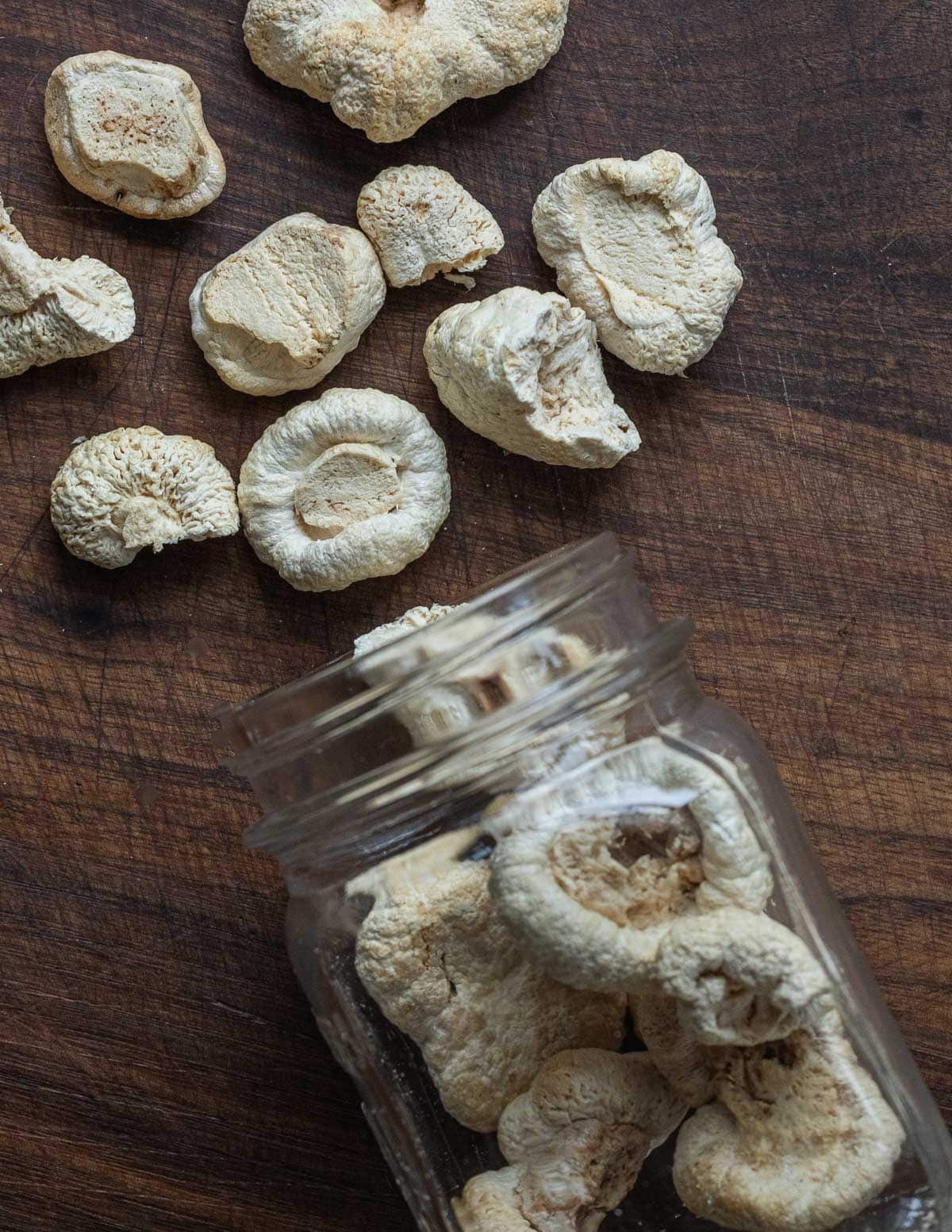
They can be sliced and dried, and that works, ok, just make sure to put some color on them after you rehydrate them. Making a duxelles and freezing is a great option, too, and would serve double duty by saving space in your freezer.
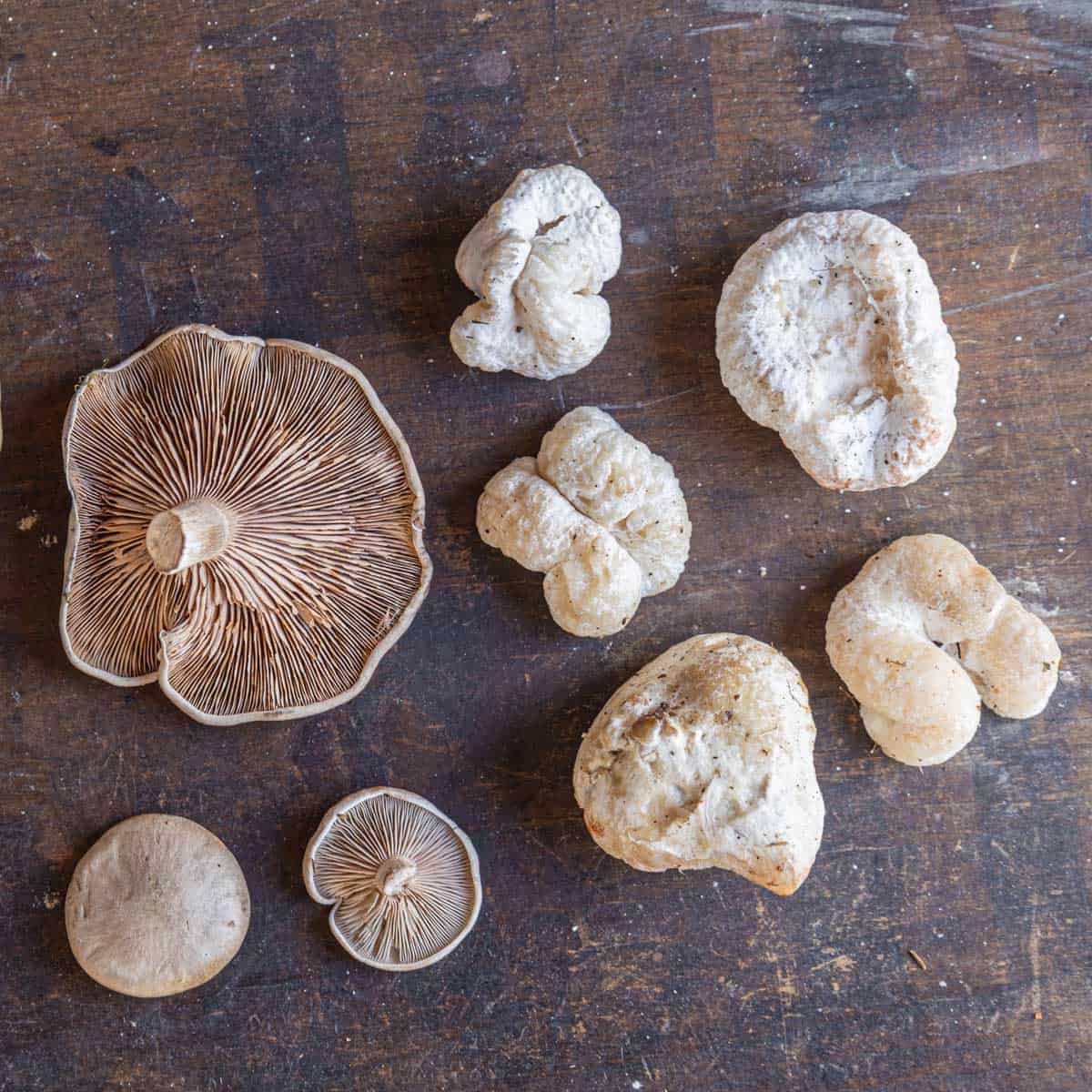
Can you eat the non-aborted form?
Absolutely, but. I really enjoy the non-aborted form, but, as a precaution, I'd suggest only harvesting them when you find them clearly growing with the aborted forms.
The Entolomaceae are numerous, and there's some others that can look similar, notably poisonous white Clitocybe like C. dealbata that you absolutely do not want to eat. But, as long as you find them in the vicinity, or are 110% sure of your identification, go ahead.
Non-aborted forms of Entoloma abortivum have a much stronger flavor than the aborted forms, and the lack the sweetness the popcorn shapes have as well.
They're a very savory mushroom, so something like the Fra Diavolo, with it's tomatoes and hot chili would be a good place to start with them. But, the simplest way to enjoy them is to just saute them up together with some garlic and parsley, and that's good too, especially with fish.
Recipes
Here's some recipes I've made for these, or where they would be a good substitute.
- Aborted Entolomas "Fra Diavolo"
- Blackened Shrimp of the Woods
- Mixed Wild Mushrooms With Garlic and Parsley
- Shellfish, Aborted Entoloma and Heirloom Tomato Ragu
- Aborted Entoloma and Lobster Mushroom Manhattan Style Chowder
- Wild Mushroom Duxelles
More
35 Essential Wild Mushrooms Every Forager Should Know
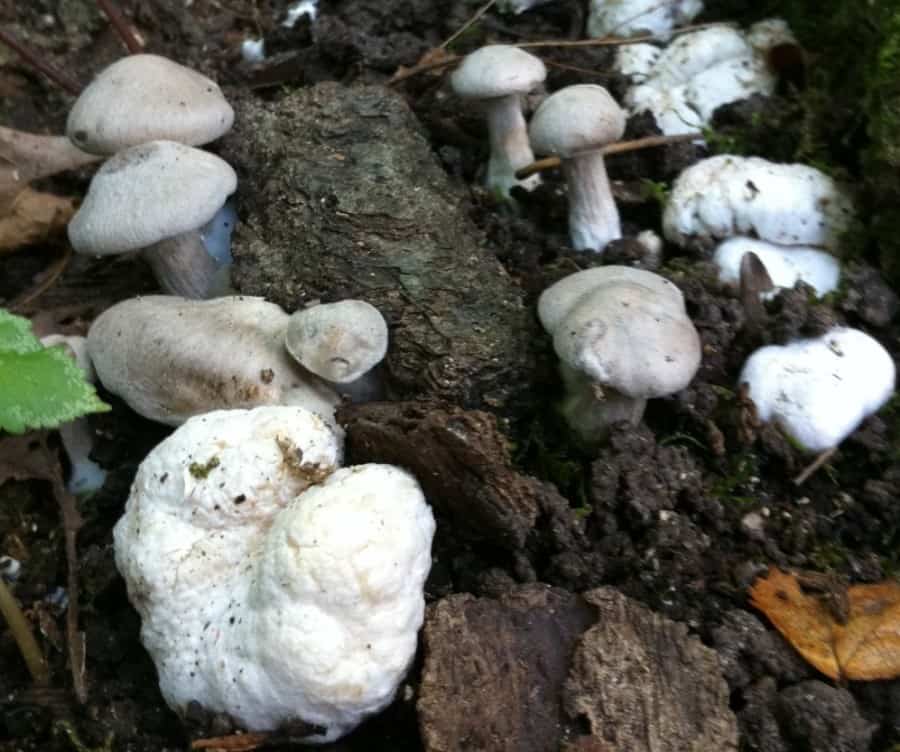

Alana of the woods
Well i dont have a freeze dryer, and i have four pounds of these beauties i just painstakingly washed! Im thinking of pickling some, but should brown them first, right? And also, wondering if you have the recipe for the oven friend shrimp of the woods on the site, bc they look wonderful! Like chicharones! Thanks for your efforts and for sharing your experience with us! Your site is an invaluable resource. Cheers!
Alan Bergo
Hi Alana. These don’t pickle very well imo so I recommend sauteeing and freezing.
Alana of the woods
Thank you! I would hate to waste them if pickles wont turn out well, i am thinking i could put some in a marinade w spices and olive oil and lemon or vinegar maybe rather than vinegar and water, and just fridge it the way one might with olives? But i just saw your jerky recipe and wonder if it would be good with these mushrooms. Theyre very meaty and smell lovely! And theyre literally EVERYWHERE! I must not waste this harvest!♥️
Alan Bergo
Jerky will work.
Shellie
The way we prepare these mushrooms is to clean well, batter as you would shrimp then fry, so delicious! When cooled I place in bags and freeze. Reheat in air fryer. These have lasted a year and are still delicious reheated.
Alan Bergo
Thanks for sharing Shellie.
Lisa
Hi curious on the cleaning...I tend to only cook the whitish portions. I end up cutting out a lot of the center if its turned pinkish brown. or toss them if the inside looks like it has a thin light brown edge. The insides can vary widely from white to pink to a more rusty light brown. It seems like I am wasting quite a bit. I am assuming as they turn brown they are going into sporing? & not edible? Also if they are prepared within a couple days of picking and if any part turns slimy I toss them. (should I just cut away the slimy and keep the firm parts? (especially on a large one?)
Do you know if there are any poisonous Entoloma's that could possibly grow right next to the Entoloma Abortivum's? I would think its safe to say when we find the aborted ones next to them, they are certainly Entalom's - are we correct in this? Thank you so much!
Alan Bergo
Hi Lisa. The entolomas you harvest should be firm, never soft or squishy. If they're nice and firm to the touch, the whole mushroom should be used. If you're referring to the non-aborted form, yes, they're edible too, and I've been meaning to update this post with some images of them. Thanks for the reminder. The non-aborted entolomas are easy to learn, just don't pick them if you don't see aborted entolomas near them, unless you're very skilled at identifying mushrooms.
Manuela Anaya
Alan, as a dietitian, I have to say I am so impressed with your recipes, the variety, the healthy add ons, and your easy descriptions. I don't know how I have never come across your website when searching for recipes over the years? We've only recently gotten into hard core mushroom foraging, and just like that, as if on cue, mother nature, and the world of fungii saw fit to bring us many of these wonderful and easily identifiable mushrooms in our own backyard and woods! I have a ton of enteloma's and armillaria mushrooms growing together throughout my yard and woods. It's challenging to see the color of the pic of your enteloma's, could be my computer screen, who knows. I wanted to inquire if they are white, beige or grey/brown. My enteloma's growing all around the aborted forms started as a very pale grey but darkened into a medium flat grey with maybe even a touch of tan hue in the cap. They spored a sort of orange, salmon, rust shade. I wonder if you have seen this. I have found many different literature references that confuse this characterisitic as being problematic. Have you found this to be the case. I have so many of the normal entelomas, growing beside the "shrimps" and then the "honey's growing all around them. I have not been brave enough to harvest the normal enteloma's due to this conflicting literature, just tons of honey's and shrimps. Thank you for all that you share on your wonderful site.
Alan Bergo
Thanks Manuela. I actually updated this post with a bunch of new images, including some showing the natural spore print of the gilled entolomas. I've eaten them plenty of times but it took me a few years of seeing them growing together to be comfortable harvesting them.
darius
How do you deal with not aborted etoloma? it has a very specific unpleasant smell and taste. is there a way to get rid of it?
Alan Bergo
I don't cook many of them as regular aborted entoloma are so prolific.
eub
Your remark that some Entoloma species are dangerous made me wonder if the Armillaria could abort one of those.
The answer is no. It turns out /E. abortivum/ is the actor here, so no other Entoloma will be found in this form. Tom Volk suggests calling these "aborted Armillaria". (Beating up on Armillaria is pretty impressive.)
I see some people say they taste more like Armillaria than like the E. abortivum agaric. Does this depend which you think is the substrate? 🙂 Does it vary?
(What I would still like to learn about the mycology is how this contributes to the growth and reproduction of the /E. ab/. Is there a flow of nutrients from the aborted fruitbodies into the E.ab mycelium and its agarics?)
Patricia A
.... glad to have helped..... I am being taught to rely on the Latin names - though even there - so many changes occur that it is difficult to keep up 🙂 That said - frankly - they do look like sweetbreads, so - ------- will be eating them tomorrow 🙂 Thank you for your continued artistry - it makes this little hobby even more delicious!
Patricia A
Glad to run across your article as I have encountered these gorgeous mushrooms in droves the past while. It appears though that you may be using the wrong common name…. I have been advised that it is Hunter’s Heart, Ground Prunes, or – the one I particularly enjoy – Totlcoxcatl 🙂 The Sweetbread mushroom is Clitopilus prunulus….
Alan Bergo
Arg, that common name was passed to me from my friend who was a chef at Charlie Trotter's in Chicago. The first time I brought them in he exclaimed: "Sweetbread mushrooms!" So many common names, so little time. Thanks for the info, I have made relevant changes.
Carol Kelly
This confusion among conflicting common names is exactly why, when I give nature programs that involve edible and medicinal plants, I strongly urge attendees ALWAYS to learn - and use! - scientific names to avoid unpleasant, or even deadly, misunderstandings!
Alan Bergo
My favorite is beefsteak mushroom. One is a polypore you can eat raw, the other could give you organ failure prepared the same way. We also need to meet people where they are, so I try to use both common and Latin names to help the medicine go down, with an emphasis on the importance of scientific names.
Mazie Jecmenek
Very good information. Lucky me I ran across your website by accident (stumbleupon). I've book-marked it for later!
Alan Bergo
Glad you enjoyed the info on Entolomas. Come August, I will be cooking with them exclusively.
brand
Great Stuff, do you have a twitter account?
Alan Bergo
no I dont currently, that will take some time i think.